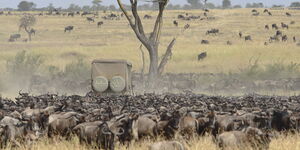The government has warned Kenyans against consuming fish harvested in Lake Nakuru.
This comes after research carried out by Kenya Marine and Fisheries Research Institute (KEMFRI) showed that the fish animals contained dangerous chemicals.
The Ministry of Agriculture issued the warning and asked the County Government of Nakuru to ban fishing in the lake.
Agriculture Chief Administrative Secretary Lina Chebii Kilimo, while addressing the press on Tuesday, January 26, noted that the chemicals were caused by pollution of the lake.
"This is not good fish. I take this opportunity to ask the Nakuru County Government, through the public health department, to check into the fishing issue," she noted.
She gave the address after overseeing an exercise in which over 100,000 fishes were removed from the lake.
The research findings also showed that those who consumed fish from the lake developed rashes.
The county realised over Ksh300 million revenue last year from the fishing industry, and according to Nakuru Agriculture CEC, the county was looking to raise fish revenue to over Ksh1 billion.
This is however, not the first time the state has issued a warning over poisonous fish. In October 2018, the state banned fish imported from China after research discovered traces of heavy metals in them, which are harmful to human health.
The laboratory tests commissioned by The EastAfrican show, came after health concerns were recently raised by several countries, including the US, that called for tighter controls in the enforcement of safety and health checks by Chinese authorities over their fish products.
According to drug sample analysis of residue done by the University of Nairobi's laboratory, the fish purchased from a wholesale dealer at Nairobi's Gikomba market contained lead, mercury, copper, and arsenic.
The results, though in levels permissible by the WHO standards, confirmed residues of 0.04 ppm of lead, 0.005 ppm of mercury, >0.001 ppm of arsenic and 1.2 ppm of copper, indicating possible contamination of the water ponds used to farm the fish.












